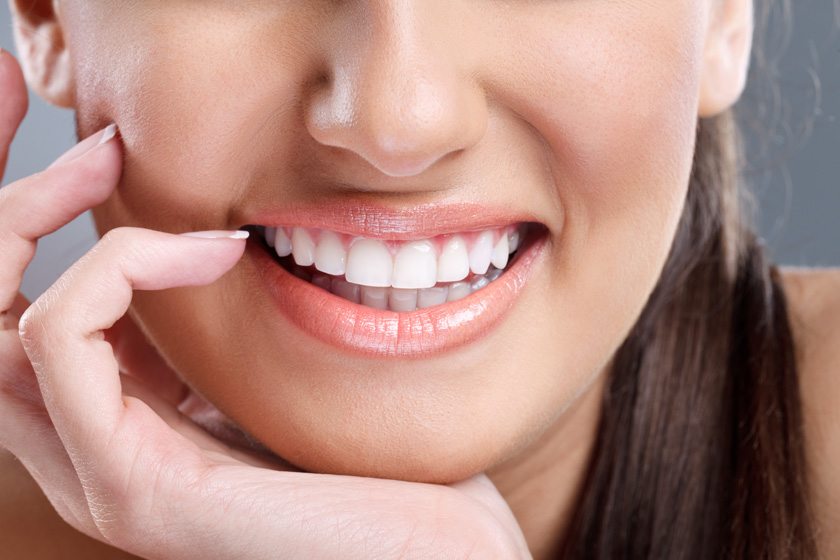It is a bleaching process using Hydrogen Peroxide or its derivatives. The substances used release oxygen (0). With the separation of oxygen, the color of the tooth also lightens. This process; It enables people with yellow, brown or gray colored teeth to have whiter teeth.
Whitening should be applied to patients with good oral hygiene and healthy teeth and gums. There is no rule that teeth whitening systems, which are a cosmetic product, are suitable for every patient.
Today, there are many types of teeth whitening methods, which can be applied by the patients themselves or applied to the patients by the physician.
The dentist should always decide which type of teeth whitening method is suitable for the patient.
Whitening Toothpastes
Thanks to the abrasive substances in the stains on the teeth, they ensure the removal of the stains on the teeth. Since these pastes do not contain hydrogen peroxide, which is a whitening agent, they do not penetrate into the deep layers of the teeth and can only remove superficial stains. These whitening toothpastes can lighten the color of the teeth up to 1 tone. However, in the office-type bleaching technique applied by the physician, the color of the tooth can be whitened up to 8 tons.
Whitening Gels and Tapes
Whitening gels are peroxide-based transparent gels that are applied to the surface of the teeth by the patient with the help of small brushes. They are usually applied 2 times a day for 14 days. Whitening strips, on the other hand, are invisible transparent bands coated with peroxide-based gel and are applied by the patient by sticking them on the teeth. In both types of whitening systems, instant whitening results are obtained in the first few days and after 4 months, final whitening results are obtained. However, these methods are not recommended to patients because they are not performed under the control of a physician and the contents of the bleaching agents used are beyond the knowledge of the physician.
Home Type Teeth Whitening Systems
These are dentist-assisted whitening systems. The physician prepares a personal mouth plate suitable for the patient on the model obtained from the measurement taken from the patient. The patient applies it into these plates for a few hours a day for about 4 weeks, according to the percentage of peroxide supplied by the physician. The duration of this application depends on the color and density of the stains, the opening tone of the teeth and the sensitivity that may occur in the teeth.
Office Type Whitening Systems
It is the fastest and most effective teeth whitening system. In this method, the whitening product is applied directly on the teeth. The dentist applies protective gel or covers the gums with rubber to protect the gums and soft tissues from the effects of the whitening agent. These products are used in combination with special types of light or laser. The result is obtained immediately after the first 30-60 minutes of application. If heat or light is not applied on the bleaching agent, the bleaching process is applied several times until the desired result is obtained.
What are the Differences between Home Type and Office Type Bleaching Systems?
Lower strength agents are used in home bleaching products. These are gels containing carbamide peroxide with percentages ranging from 10% to 22%, which have almost the same potency as gel with a 3% hydrogen peroxide concentration. However, in the teeth whitening products applied professionally by the physician in the office, gels with a hydrogen peroxide concentration of 15% to 43% are applied, and as a result, very fast and effective results are obtained in office type whitening systems. In home bleaching systems, individual plaques suitable for the patient are used for gel application in the bleaching process. The patient puts the whitening gel in this plaque and then applies it to his mouth. Although in personal plaques, there is leakage from the edge of these plaques to the gums and soft tissues, where irritation and burning may occur. However, in office-type applications, the dentist provides complete protection to the gums and soft tissues, and this is a very important difference. There is a small cost difference between the whitening methods applied by the patient and applied in the office. However, in office type whitening systems, optimum results are obtained in terms of patient’s health and whitening effect.
The reason for the discoloration and darkening of the teeth must be known, and accordingly, it should be decided whether the patient is suitable for teeth whitening, and if appropriate, the appropriate whitening system and material should be selected and provided by the dentist.
In physician-assisted bleaching systems, the patient and the physician must be in contact. The physician should check the stabilization of the compatibility of the plate with the patient’s mouth.
What are the Points to Be Considered After the Bleaching Process?
Extreme cold or heat should be avoided for the first few days. After the procedure, each patient has a diet list to follow. Any coloring food or drink is prohibited. Especially the first 3 days.
k is sensitive, but ideally 7-10 days should be observed.
Products containing dark colors such as cigarettes, tea, coffee, chocolate, red wine, cherry, caramel, tomato paste should not be used for 1 week after the end of the process. Otherwise, the resulting whiteness will return.
To Whom Whitening Procedures Are Not Applied?
Teeth whitening is not applied to patients younger than 16 years old. In patients at this age, the pulp chamber and the nerves of the tooth are in their largest dimensions. If bleaching is applied, the pulp becomes irritated, hypersensitivity occurs and results that reach root canal treatment may occur.
Whitening should not be applied to pregnant women, patients with hypersensitive teeth and receding gums due to gum disease, and patients who are allergic to the bleaching agent peroxide.












Recent Comments